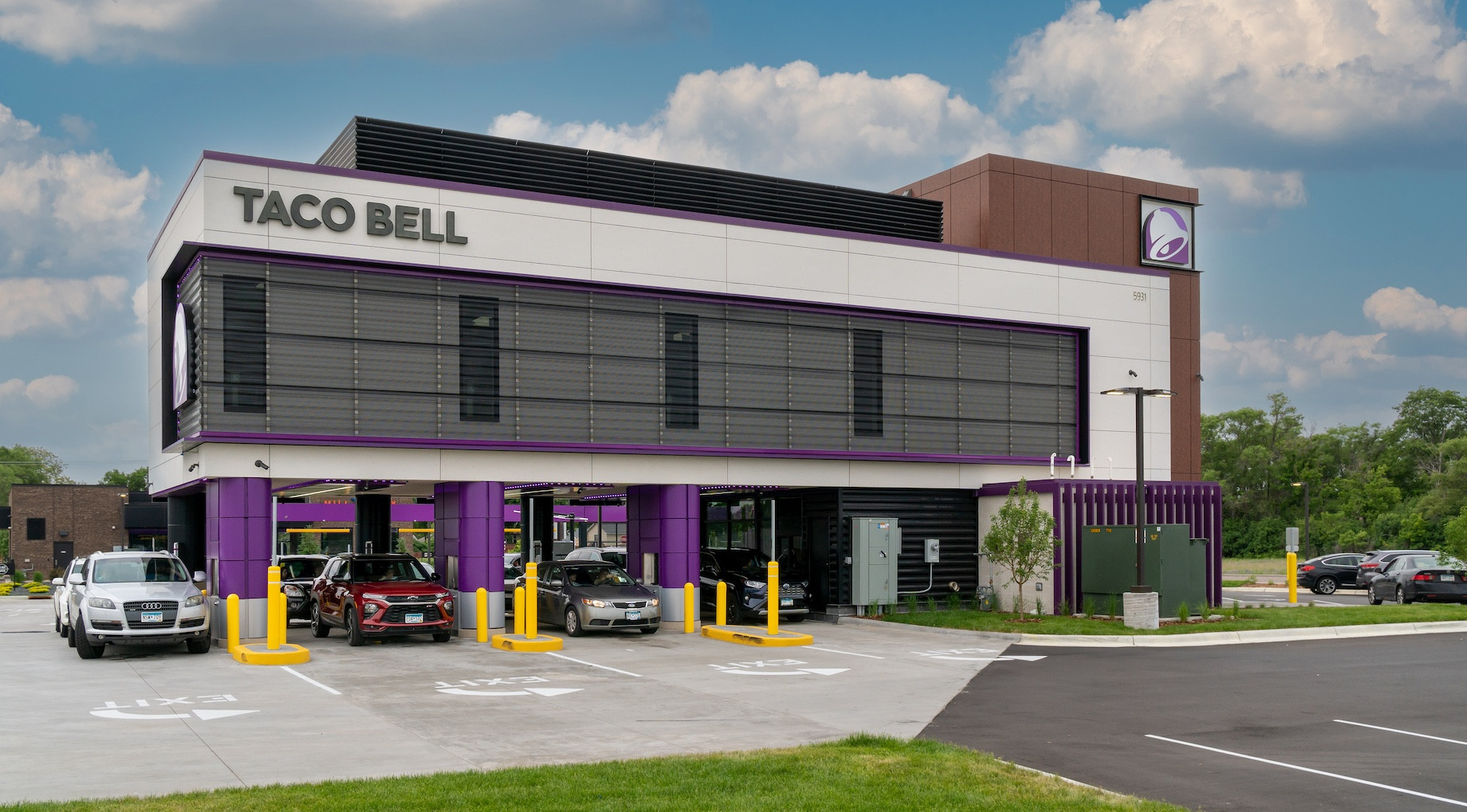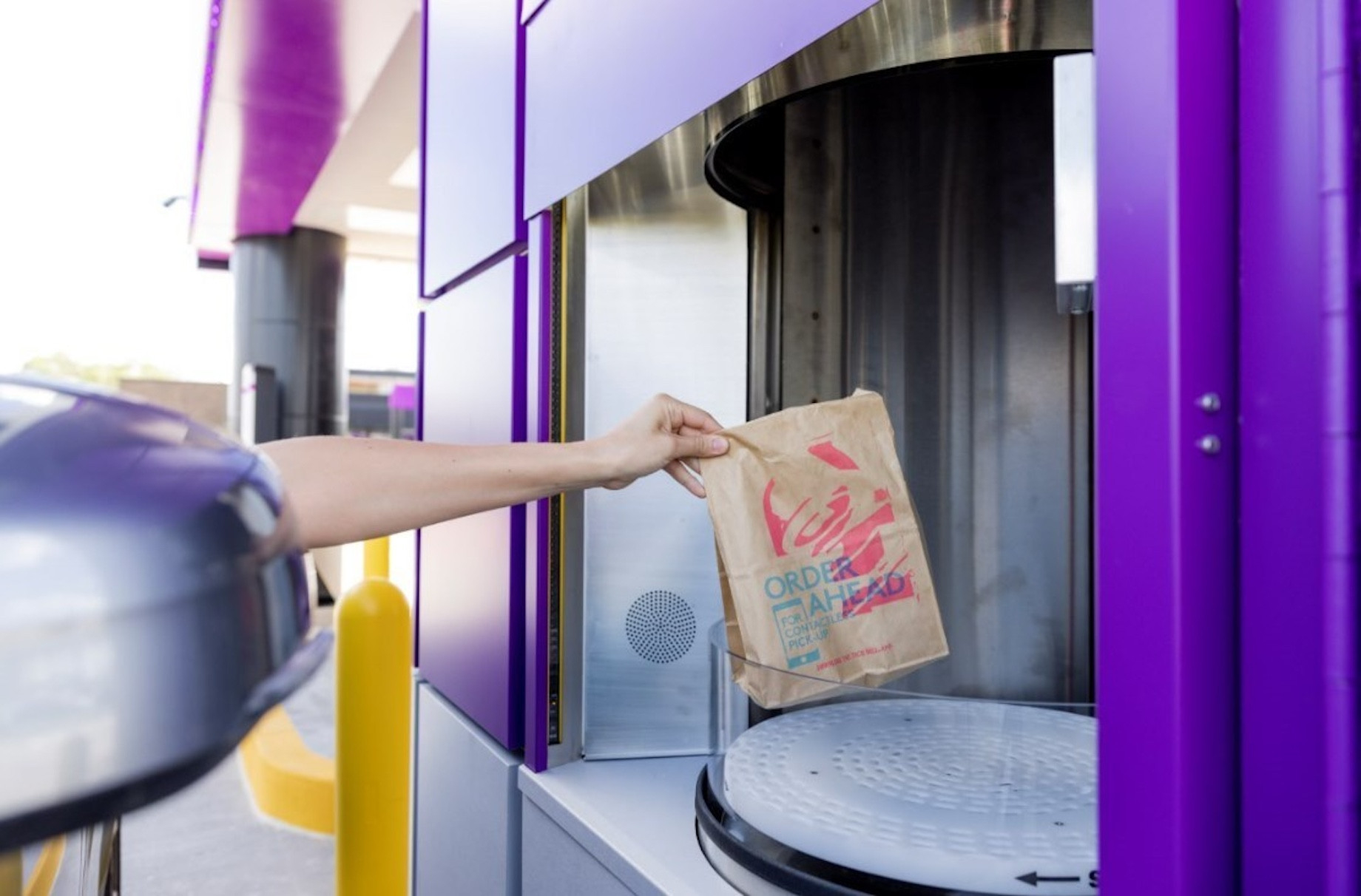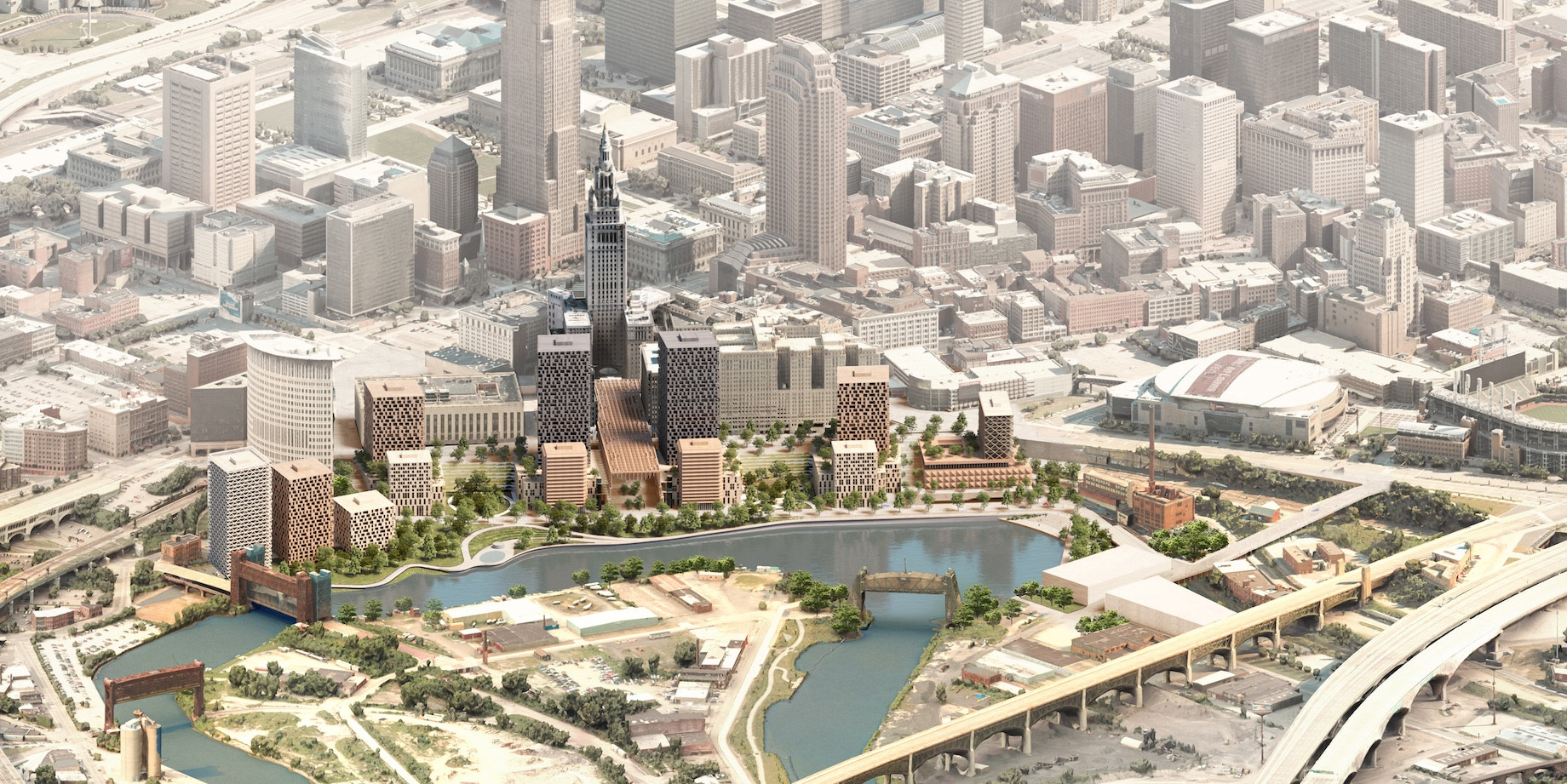Which QSR Moves Cars Through Drive-Thrus the Fastest?
Taco Bell has shaved 17 seconds off the time between ordering food and exiting the drive-thru. For Intouch Insight and QSR’s Latest Annual Drive-Thru Study, mystery shoppers visited 10 quick-service chains’ drive-thrus a total of 1,491 times in June and July. Combined, the 10 QSRs accelerated their service time by four seconds from the prior year, but Taco Bell’s 205.35 seconds represented a more dramatic acceleration.
Wendy’s, KFC, Dunkin’ and Carl’s Jr. had the next-shortest service times. Other QSRs evaluated were Arby’s, Burger King, Hardee’s and McDonald’s.
Among all 10, the average wait time before placing an order decreased by 25 seconds, but this likely owes to fewer cars in line, not faster service. The average number of vehicles in line dropped from 2.76 in 2022 to 1.27 in 2023. Chick-Fil-A had the most cars in line, averaging 3.41.
Taco Bell is taking steps to speed up its drive-thru lines even more, in part by separating traditional customers from pre-order and delivery customers. The company’s Defy prototype in Brooklyn Park, Minnesota, opened in June 2022 has been a proving ground for new ideas. The drive-thru features four lanes and a machine that transports orders straight from the kitchen upstairs to customers’ vehicles. The average service time at the location was 2 minutes and 31 seconds, significantly shorter than the chain's average of 3 minutes and 25 seconds and the industry average of 4 minutes and 22 seconds, according to the study.

Taco Bell’s Defy prototype makes the most of the land it sits on with a kitchen upstairs, four drive-thru lanes below and no dining room.

In Taco Bell’s two-story Defy prototype, food is transported mechanically from the upstairs kitchen to the drive-thru lanes below.
Taco Bell opened a single-story, mobile-focused prototype with no dining room in El Paso, Texas, in March, and it’s introducing technologies like a more efficient order management system.

Taco Bell’s mobile-order-focused prototype in El Paso, Texas
Innovating to trim time does pay off, according to the Intouch Insight and QSR study. Based on an average meal cost of $10.35, trimming five seconds from the total wait and service time would generate $8,210 in potential revenue annually for each store.
More on Drive-Thrus from C+CT
Why Have a Drive-Thru Window When You Can Have a Drive-Thru Door?
Fast-Food Chains Order Up Prefab Drive-Thrus
An Entirely Touchless Drive-Thru on the Horizon
What It Takes to Add Drive-Thrus: Phillips Edison & Co.’s Methodical Process
5 Developments to Watch, Including a Riverfront Master Plan and a Surgery Center at a Mall

Cleveland: The Cleveland City Council has voted to continue a master development agreement with Bedrock for the $3.5 billion Cuyahoga Riverfront Masterplan, rendered above. The 35-acre plan calls for the redevelopment of 35 acres, including the historical Tower City, over the next 20 years. Bedrock has acquired 1.3 million square feet across multiple properties near the riverfront. Plans call for 3.5 million square feet of new commercial property, including retail, residential, office and 12 parks.
Novi, Michigan: Robertson Brothers Homes and Robert B. Aikens & Associates broke ground on Sakura Novi, according to CC Consulting principal Cindy Ciura, who in 2016 was brought in to find developers for the project. The 20-acre, Asia-themed development will have 60,000 square feet of commercial space, including Asian restaurants, apparel and service retailers, as well as a significant residential development and Japan-inspired gardens surrounding a lake in the middle of the project.
Bozeman, Montana: Developers broke ground on Intermountain Health and Ortho Montana’s 45,000-square-foot surgery center at Gallatin Valley Mall. It will open in November 2024. The Whole Foods-anchored mall is undergoing a $50 million redevelopment into a mixed-use center called Gallatin Crossing. Owners Corning Cos. and Situs Realty Group, are working with Grossman Development Group and Boston Realty Advisors to demolish a significant portion of the enclosed mall to make room for medical and new retail.
Skokie, Illinois: Home furnishings store Arhaus, fashion brand Zara and mini-golf attraction Puttshack will move into a long-empty former Lord & Taylor at Unibail-Rodamco Westfield’s Westfield Old Orchard in 2024. The transformation of the former department store is part of the mall’s redevelopment plan, which includes a public park, event space, residential buildings and health care services.
Princeton, New Jersey: SJC Ventures’ 292,700-square-foot, Whole Foods-anchored Montgomery Promenade has broken ground. The center will open in two phases starting in 2025. Confirmed tenants include an 11,000-square-foot Ulta Beauty, European Wax Center and four restaurants: Panera, Iron Whale, The Robinson Ale House and Turning Point.
Prospective Tenants Are Asking Sustainability Questions, and Agents and Brokers Want Answers
Tenants want more transparency into properties’ sustainability as they search for space, according to a July survey of National Association of Realtors members. In response, brokers are learning more about the sustainable features of commercial properties they are leasing. Fifty-two percent of survey respondents were comfortable answering clients' questions about building performance, while 17% were uncomfortable.
Fourteen percent said clients asked for advice on financing building improvements around sustainability or energy efficiency, and 35% of brokerage firms had experience working with commercial building repurposing, such as converting empty malls into technical schools.
Thirty-four percent cited utility and operations costs as the sustainability features that are most important to their clients, 22% cited indoor air quality, 20% energy-efficient windows and doors and 13% efficient use of lighting.
Sixty-five percent of survey respondents said promoting energy efficiency in listings is valuable, and 39% said green certifications like LEED, Green Globes and the Living Building Challenge increase commercial property values.
More on Green Financing and Sustainability from C+CT
The 3 Ways to Use C-Pace Financing to Green Your Properties
The Largest LEED for Neighborhood Development Project in the U.S.
6 Lease Clauses That Signal Real Green Cooperation Between Tenants and Landlords
Investors Are Demanding Sustainability and How Landlords Are Answering the Call
By Brannon Boswell
Executive Editor, Commerce + Communities Today